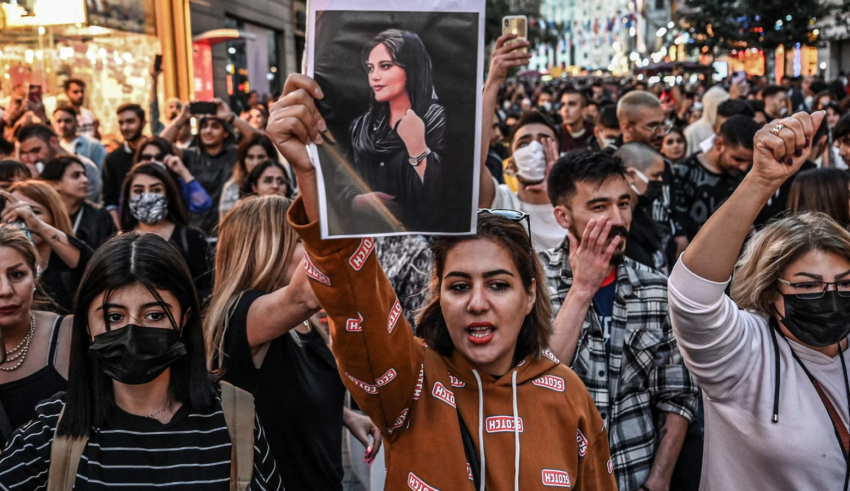
On the 16th of September 2022, Mahsa Amini, a 22 years old woman, was pronounced dead after being in a coma for a few days in a hospital in Teheran following her detention by Iran’s so-called morality police. Mahsa Amini was arrested for breaking the country’s hijab rules after revealing too much of her hair beneath her hijab. Witness and relatives reported that while in custody, she was beaten so hard that she was already brain dead when she arrived at the hospital, an allegation that the police deny. The Iranian people, specifically women, have taken to the streets removing or burning their headscarves or cutting off their hair in public or on social media in protest over mandatory hijab laws. During protests, seven people have allegedly lost their lives, although the Iranian authorities have not confirmed the deaths yet.
This event comes weeks after the Iranian government announced its intent to pass a strict new law on wearing the hijab. According to an interview given by the secretary of Iran’s Headquarters for Promoting Virtue and Preventing Vice, Mohammad Saleh Hashemi Golpayegani, the government is planning to use facial recognition technology against women on public transport to restrict women’s clothing. Under Iranian law, it is mandatory for women to wear a hijab and cover their bodies with loose-fitting clothing to disguise their figures.
It was during the Islamic Revolution in 1979 when the use of the hijab became compulsory for women after the announcement of the then Iranian Supreme Leader, Ayatollah Khomeini. At the time, the resistance was immediate and the protest strong, forcing the government to claim it was just a recommendation. It was not until 1983 that the parliament passed a hijab law. Before that, women used to wear the hijab for a variety of reasons, like family or religious pressure and tradition. The enforcement of the law made the hijab, at least for the majority of Iranians, a symbol of oppression that restricted not only their freedom of expression but also their own nature. Nowadays, especially after Amini’s death, the hijab has become a symbol of the regime’s power over its people and even worse its power to control women’s right to life.
In 1981, Article 18 of Iran’s Forced Hijab Policy (The law for Rebuilding Human Resources of Government Agencies and Ministries) provided that not abiding by the “Islamic dress codes” was an offense punished with 74 lashes. Three years later, according to a follow-up statement, unveiled women or those wearing badly the hijab were excluded from public buildings and government offices. In 1996, not wearing a hijab was regulated as a criminal offense under the Islamic Penal Code, with possible penalties of a prison sentence from 10 days up to two months, in addition to the standard punishment of 74 lashes. In the last decade, a law has been passed that describes the duties of Iran’s government agencies concerning mandatory hijab and establishes the ‘morality policy’. The Gasht-e Ershad are police units tasked to ensure that people follow Islamic morals and are dressed properly. Under the law, the morality police is authorized to dictate to women how to dress and can even exercise violence without fear of prosecution.
The compulsory dress code has been used to exclude women from various aspects of public life, either banning their entrance to specific places or setting restrictions on their education and career. Conservative figures from the Iranian political and religious scene claim that mandatory hijab is crucial for retaining the country’s internal order and resisting westernization, while the lack of a proper hijab threatens society. The enforcement of the hijab is not a religious ritual or tradition anymore but has become one of the regime’s tools to impede cultural pluralism and control the Iranian people, aiming at strengthening the dictatorship and curbing democracy.
The current situation in Iran is a clear example of the government’s position. Amid intensive protests around the world over Amini’s death, Iran shut off the Internet and blocked access to social media platforms in parts of the country. At the same time, state media claim that President Ebrahim Raisi of Iran ordered an investigation into Amini’s death, while a representative of the supreme leader visited her family, stating that action will be taken to defend the rights that were violated. Nevertheless, President Raisi on his first appearance at the United Nations headquarters in New York this week, claimed that Iran is a model of justice and human rights, without making any reference neither to the ongoing situation in Iran nor the death of Mahsa Amini.
By The European Institute for International Law and International Relations.















